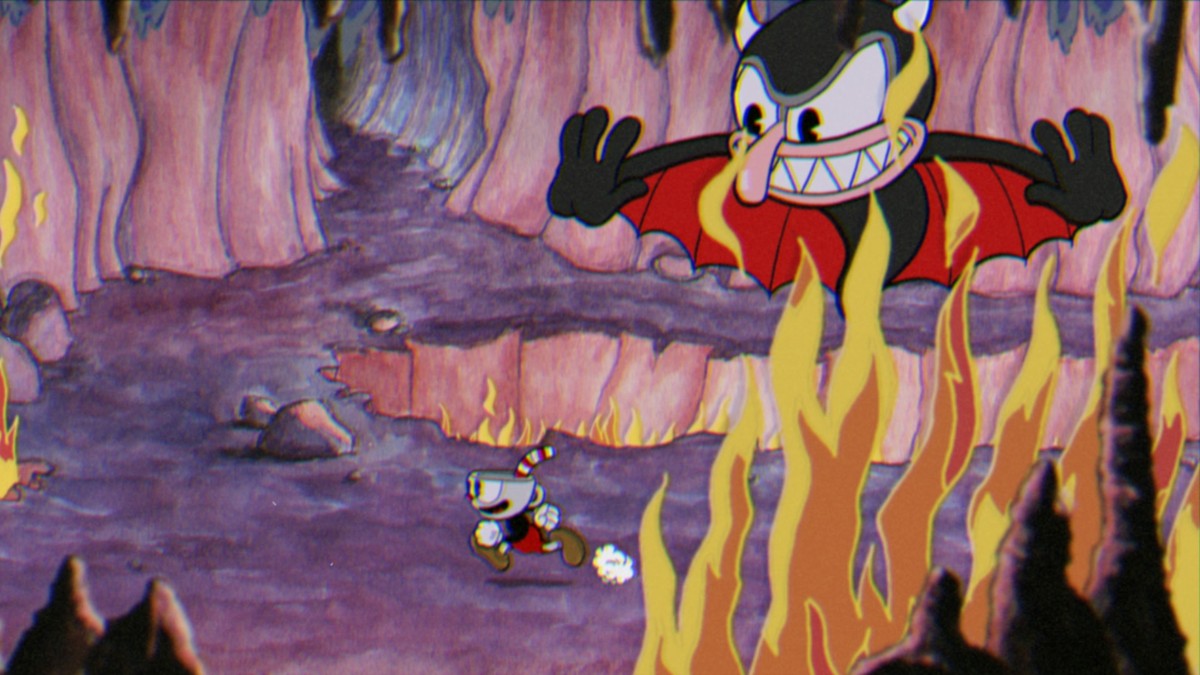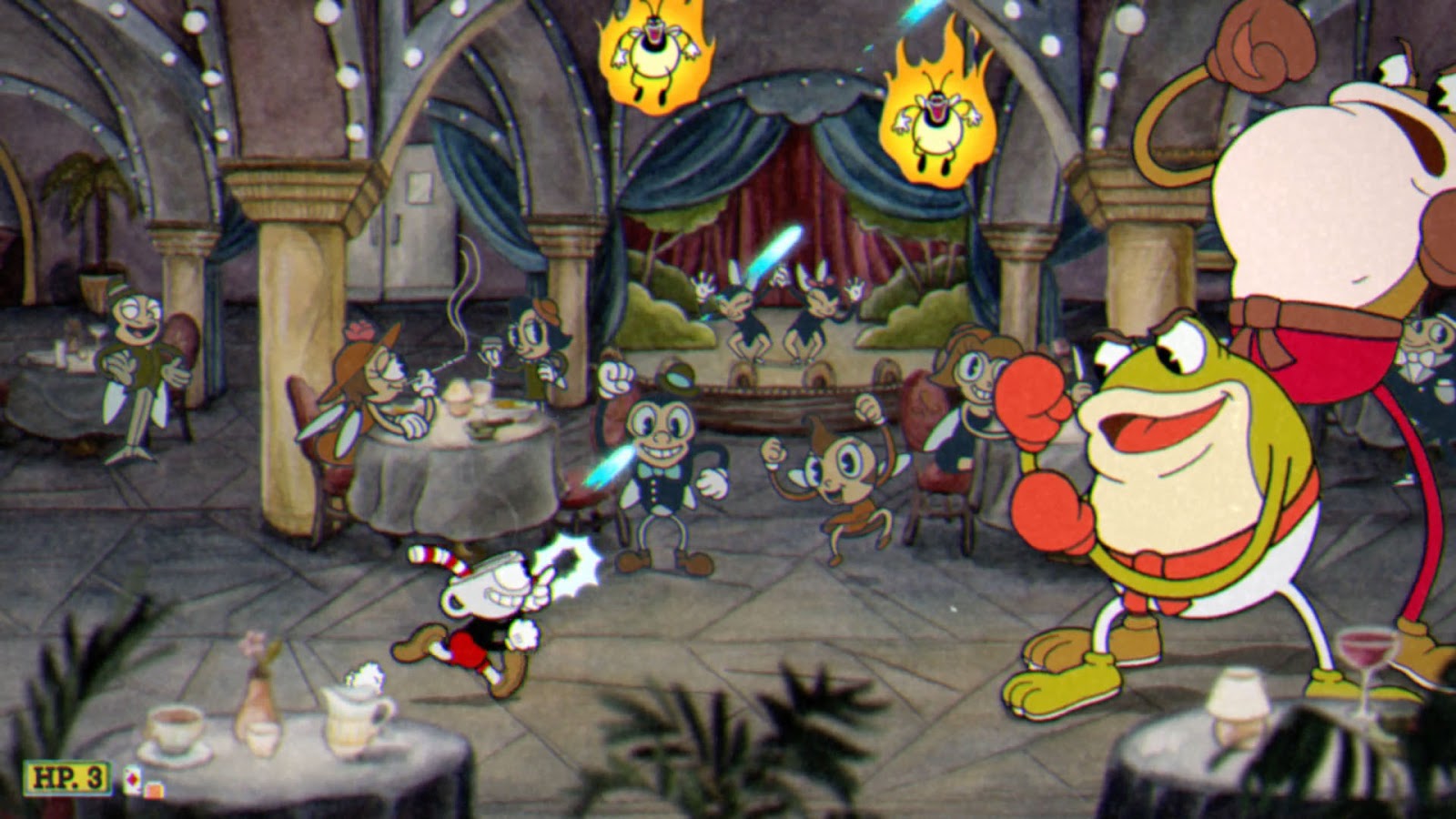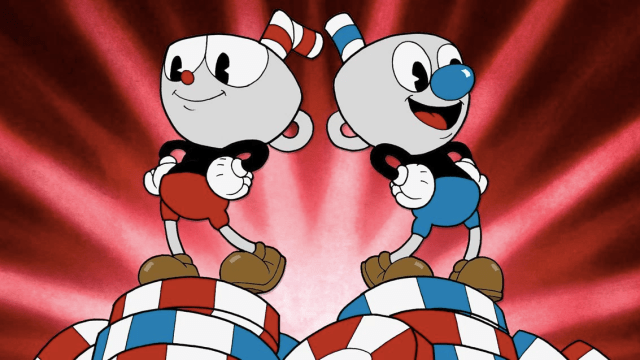Designing a game that manages to be both tough and fun is a difficult task, but Cuphead designers Chad and Jared Moldenhauer, along with the rest of StudioMDHR, managed to pull it off. I spoke with the two brothers over the phone to learn about boss design, cut concepts, and life after a successful indie game.
Note: Portions of this interview have been edited and cut for clarity.
Was the original gameplay concept for Cuphead different at all or was there always such a large emphasis on boss fights?
Chad Moldenhauer: We always knew we wanted to focus on boss fights from the beginning after we we chose run and gun as a genre. We still had this big pile of our dreams; it’s all exactly what we had now. It was focused on bosses and sprinkled with some other things like the mausoleums and platforming levels. But it was the opposite of run and gun games from the past.
I’m curious about how you designed the bosses. Was there an enemy concept first or do you use the mechanics as a starting point?
Jared Moldenhauer: It goes back and forth from case to case but a lot of the time we’d design how it would play first. There’s a feeling for the size of the boss or where it is situated on screen so that we can then produce a concept for that. But a small portion of it was matching that with the theme of whatever island the boss is on. Within that, there’s a lot of iteration. I would have loose concepts for what each boss could be and then come up with around five ideas that might fit. Usually Chad would refine them and pass them to an artist.
On occasion, it drifts away from the original idea, but between the ideas Chad and I discuss, it tends to be one of the initial ideas. For instance, the slime, Goopy Le Grande. We just wanted to have a little shout out to early RPGs from the 80s. The first enemies were always slime. That’s a design that came before the [boss] pattern existed.
Were there any bosses or ideas that didn’t make the final cut?
Jared: When the game was originally smaller, we had a bat. People may have seen it before. It was going to be a sort of pre-last boss kind of fight but we hadn’t fully animated it. When the day came for us to expand on the game, the bat no longer fit into the universe we had. Instead of forcing it to work, we abandoned it.
We also had another concept that we never programmed or animated. We thought it would be unique if we could have a boss that you fought on a music sheet and where the music playing was the pattern you had to do. It got complicated because the song would have to change for each difficulty setting. We didn’t really want to do that. Also, once you have a song done, you wouldn’t be able to change the boss’ pattern.

Are there bosses that you really enjoy? Things you look at and say “Wow, we nailed that?”
Chad: King Dice. Or initial scope of how crazy we wanted that — mini-bosses within a boss, each with different backgrounds — it sounded awesome on paper. The fact that we pulled it off blows my mind.
Jared: I have a connection to the pirate. It was a sort of a moment where we had it and I played… it made everything feel more concrete. I thought, “This is a great game. This is something I’d be proud to work on and make.” It was the first sign to me that this was going to go well; I still get that feeling sometimes when I play it.
Looking at power ups, how do you balance the desire for fun weapons while making sure they don’t make any boss fight too easy?
Jared: For balancing, we needed to have weapons that were different and better for different fights. Homing isn’t a great speedrunning weapon, but it makes most patterns easier. The hope is to mix and match for each fight. We didn’t want to implement, say, 40 weapons, since they would all blur together.
I’m happy with how it turned out but there’s a few things that slipped through the cracks. The charge weapon ended up being a little too strong. At the same time, if you’ve watched speedruns, you might see them use a glitch while swapping weapons. That was known, and we hoped we could patch it before people caught on. But, bless the gamers, it took them a day or two.
Chad: We’re going to patch it in the very near future.
Folks have really embraced Cuphead‘s art style. Were there any complications implementing it during production?
Chad: Doing this style of animation and making sure it’s done by hand probably slowed our production by 80% [compared to] a digitally-animated game, but we never got to a point where it bottlenecked the gameplay. A lot of that is because the animation they did in the 1930s is pretty whimsical. If you want a character to take his hand off and turn it into a shovel, you could just do it. When we were planning the game and coming up with ideas, we would use the exact same mentality: anything goes. If it sticks with the theme and strikes a chord, we just ran with it.

A still of the aforementioned bat boss. It was eventually cut from the game.
When you look at some of these older cartoons from the 1930s and how they were visually coded, there’s ties back to problematic art like minstrel shows. Were there ever designs you overhauled or abandoned because they might have strayed too close to that?
Chad: We went into the game knowing that what we wanted from the era was the technical, artistic merit, while leaving all the garbage behind. You can find it in everything from the era: film, advertisement, everything. We wanted to take the style but make it our own. We tried to focus on our likes and dislikes and steer away from any of that.
Jared: I don’t think it was a complication either. If you follow the technique, you don’t have always to follow specific character designs or anything from the era that might be heavily negative. It never caused problems during production.
Chad: I think the important thing is that we took the character we wanted to make and then placed them into the era.
Speaking of character designs: what’s in the cups?
Chad: Internally, we’ve always said it’s their essence or their soul.
Jared: It wasn’t really anything too definitive. I think that comes from the design aesthetic, but I think it would be weird if it was glowing red or something like that. We we just like, “Yeah, that’s their soul!”
Chad: It’s not their soul is made of milk; it can be anything. That can be left for the fans to interpret.
Did you ever consider having more than Cuphead and Mugman? Maybe a character select like old arcade games?
Jared: When we started, it was just Cuphead. Shortly after that we thought it would be great to have two characters. I was permanently Luigi because I was the younger brother, and I thought we should have two characters that sort of capture that feeling. It would have been cool to have more characters, but we never planned on it.
There were dozens of initial character designs that could have been in the game. For instance, the axeman from the first world was one of the designs for our main character. We tossed him back in when thinking about NPCs.
Chad: I’m really glad we got to bring him back.

I remember reading that you remortgaged your house to finance this project. That was a big risk.
Jason: There’s risk for everything. Movies, book, films — it’s always been a hard task to break into any industry. In my head, we always did what we were comfortable doing. When this was a small game, we were still working full time jobs. If we knew the scope from the start, it would have been daunting. I think the trick is to take small steps. I would say that the most important thing is, if you’re passionate about something, to start doing it. Think about what is reasonable for that moment and grow it if and when the time comes.
Chad: There’s this typical indie rule of “start small and finish small and get work out there.” When I think back on it, this was almost like three small games that we had the foresight to make into one large piece. You should never go into independent design thinking, “We’re going to set up a game, get a company study, mortgage our homes right now.” I would never suggest that. Get a small team, keep your day job, and use your best judgement as your game gets closer to finish. Be careful before you dump real money or time in.
What comes next after Cuphead?
Jason: I’m looking forward to having time for my family. I’ve had my head down in one room for so long that it feels like I need to grow back into having a life again. But of course, the dream is to continue making games.
Chad: What we do know is that we want to stay in the realm of hand-drawn art style for the foreseeable future.

Comments